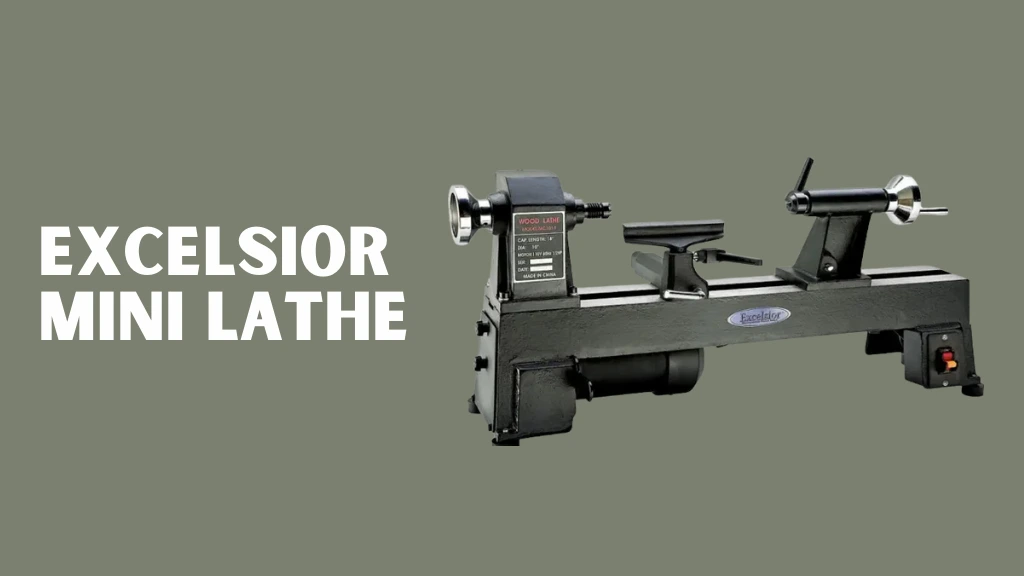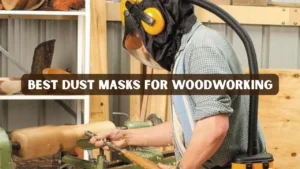For anyone seeking a compact woodturning machine that combines strength, stability, and affordability, the Excelsior Mini Lathe is an option worth considering. It has been distributed by a reputable supplier and has earned the trust of hobbyists over the years for offering a strong balance between performance and price. Its solid construction and ease of use make it suitable for both beginners and more experienced woodworkers looking for a reliable secondary lathe.
This comprehensive guide will cover the lathe’s specifications, real-world performance, popular upgrades, advantages and drawbacks, comparisons with other mini lathes, maintenance tips, frequently asked questions, and a practical buying checklist. By following this guide, readers will gain a complete understanding of the machine’s capabilities and be able to decide if it is the right addition to their workshop.
Why Choose the Excelsior Mini Lathe
The Excelsior Mini Lathe is designed for beginners and hobbyists who want an affordable entry into woodturning without sacrificing build quality. Unlike some lightweight bench tools, this machine uses a cast-iron bed that helps minimize vibration and delivers smoother results. It is most often used for pen turning, small spindles, tool handles, and decorative wood projects. With optional upgrades, it can serve as a long-term tool for anyone serious about turning.
The typical buyers for this machine include pen turners who need a reliable machine for small but precise workpieces. Hobbyists often select it because it offers stability and sturdiness without demanding the price of professional-grade lathes. Many DIY enthusiasts also enjoy it because it is highly customizable, with plenty of upgrade paths that extend its usefulness over time.
In the Box and Core Specifications
When you purchase this mini lathe, it typically comes with a cast-iron bed, along with a headstock and tailstock already mounted. The package usually includes a spur center, a live center, and a small faceplate for securing workpieces. A 6-inch tool rest and a knockout rod are also included to make accessory changes easier. The motor is a half-horsepower unit, approximately 370 watts, connected to a stepped pulley system that provides multiple speed options. Users can select from speeds around 760, 1100, 1600, 2200, and 3200 RPM, giving sufficient versatility for different project requirements.
The lathe features an MT2 taper and a spindle nose with a 1″ x 8 TPI thread. It has a swing capacity of about 10 inches and 18 inches between centers, which can be extended with an optional bed extension for longer workpieces. Depending on the model version, the total weight ranges from 75 to 83 pounds. These specifications make it a reliable entry-level machine, capable of handling a wide range of small to medium projects while providing stability and flexibility for various woodworking tasks.
Real Performance in Everyday Use
Many woodworkers report that this mini lathe feels much sturdier than its compact footprint suggests. The cast-iron body effectively dampens vibration, making tool handling smoother and reducing fatigue during long turning sessions. This stability is especially appreciated when working on small bowls, tool handles, or intricate pens, where achieving clean, precise results depends on consistent control.
However, it is not a perfect tool. Some users note that the motor tends to warm up after extended use, especially when sanding or roughing down dense hardwood blanks. The stepped pulley system, while reliable, requires manual belt changes whenever you need to adjust speed. For many hobbyists, this is a minor inconvenience, but for projects that require frequent speed adjustments, it can feel limiting.
On the positive side, users frequently praise its affordable price point, stable performance, and surprisingly smooth finish results. On the downside, potential buyers should prepare for the possibility of motor heating, the learning curve of stepped speed adjustments, and occasional quality-control issues, such as shipping dings or minor surface flaws, which should be addressed immediately upon receipt.
Maximizing Your Lathe with Accessories and Upgrades
Many owners treat this mini lathe as a foundation to customize and improve over time. A common upgrade is the installation of a variable-speed motor kit. By removing the need to shift belts manually, users gain finer control during sanding, finishing, or detailed turning. This upgrade is often described as transformative, significantly improving workflow efficiency.
Another frequent upgrade is the bed extension, which increases the between-center capacity from 18 inches to over 38 inches. This allows you to work on longer spindles such as chair legs or stair balusters. For more versatile work holding, many turners invest in a high-quality chuck or collet system, ensuring compatibility with the 1″ x 8 TPI spindle. Tool rests and aftermarket faceplates are also popular, improving ergonomics and offering smoother tool movement.
Finally, replacement belts are inexpensive but essential. Keeping a spare on hand ensures you won’t lose valuable shop time if a belt breaks mid-project. Over time, these upgrades transform the lathe into a long-term workshop companion rather than just a starter tool.
Pros and Cons
The Excelsior Mini Lathe’s most notable strength is its cast-iron construction, which provides excellent stability and minimizes vibration during turning. This solid build allows hobbyists to achieve smoother results, especially on small or detailed projects. Additionally, its affordability makes it accessible to a wide range of users, from beginners to experienced woodworkers seeking a compact secondary lathe.
Another advantage is the wide availability of support in terms of replacement parts, user manuals, and compatible accessories. Setting up the lathe is straightforward, making it easy for beginners to get started without extensive prior experience. This combination of strong construction and ease of use helps the Excelsior earn positive feedback from many hobbyists and small-shop turners.
Despite its strengths, the lathe does have limitations. The stepped pulley system means users must manually change belts to adjust speeds, lacking the convenience of an electronic variable-speed system. The motor can also become hot during extended use, requiring periodic breaks. While Rockler generally provides solid customer support, occasional quality-control issues have been reported, so buyers are advised to inspect their machine carefully upon delivery.
Comparison with Other Mini Lathes
When shopping in the mini lathe category, many woodworkers compare the Excelsior Mini Lathe with Sherline, Taig, Rikon, and Jet machines. Sherline and Taig are mainly designed for precision metalwork, making them ideal for machinists who require accuracy on small, detailed projects. However, they are less practical for woodworking applications that involve larger blanks or heavier cuts. Experienced hobbyists often point out that this is where the Excelsior proves to be more versatile and beginner-friendly.
The Rikon Model 70-105 is often seen as a direct competitor since it shares similar swing capacity and bed length with the Excelsior. A key distinction is that the Rikon sometimes includes a slightly stronger motor, which helps when turning dense hardwoods. Independent testers and woodworking communities confirm this difference in performance, noting it as a small but useful upgrade. Even so, many professionals argue that the Excelsior offers nearly the same reliability at a lower cost, which strengthens its reputation for value.
Jet mini lathes also receive strong recognition, particularly for their reliability and long-term performance, making them a favorite among serious turners. Certain Jet models come with electronic variable-speed systems already built in, giving users more convenience and flexibility. Reviews on trusted retailer platforms confirm their durability but also note that the higher price limits accessibility for new hobbyists. By contrast, the Excelsior Lathe provides an affordable yet stable alternative, backed by Rockler’s support and consistently positive ratings.
Buying Checklist
Before committing to this lathe, buyers should consider a few key points. It is essential to verify the exact model number and confirm specifications against the manual. Check what accessories are included, as some packages may vary. Think about your planned projects and whether you will need a bed extension for longer pieces. Evaluate whether investing in a variable-speed upgrade is worth it for your turning style.
It is also a good idea to review Rockler’s warranty and return policies ahead of purchase. Ordering spare parts, particularly belts and a chuck, can prevent frustrating downtime later. By considering these factors before purchasing, you can ensure the lathe meets your needs today and remains useful in the long run.
Maintenance and Troubleshooting
Maintaining this mini lathe is relatively simple but essential for its long-term performance. After every session, wipe down the cast-iron bed to prevent rust and apply a light layer of paste wax or way lubricant. Regularly inspect belts for wear and proper tension, replacing them as necessary.
If you notice spindle wobble, check pulley alignment and ensure all set screws are tight. For motor overheating, take breaks during heavy work or consider upgrading to a variable-speed motor. These small but consistent maintenance habits extend the life of the machine and keep it operating smoothly.
Conclusion
The Excelsior Mini Lathe delivers a strong balance of affordability, stability, and upgrade potential. While it has limitations such as stepped speeds and occasional motor heating, it remains one of the most trusted mini lathes for hobbyists and pen turners. Its cast-iron bed sets it apart from flimsier models, and with upgrades like a variable-speed kit and bed extension, it can remain useful for years.
If you are ready to explore woodturning, this machine offers a practical, reliable entry point. With the right care, accessories, and a thoughtful upgrade plan, the lathe can grow alongside your woodworking skills.
FAQs
Is the Excelsior Lathe suitable for beginners?
Yes, it is often recommended as a first serious lathe. The cast-iron bed provides stability, and the included accessories cover most basic needs.
Can it be converted to variable speed?
Yes, retrofit kits are available and widely used. Many owners consider this the best upgrade for flexibility and control.
What projects is it best suited for?
It is ideal for pens, handles, spindles, small bowls, and decorative wooden objects. With a bed extension, it can handle longer workpieces such as chair legs.
Who sells and supports the Mini Excelsior Lathe?
Rockler, a trusted woodworking supplier with decades of reputation, distributes the lathe. Replacement parts and manuals are available through their website and stores.
What kind of warranty is available?
Warranty details vary, but Rockler generally offers standard return policies and manufacturer-backed support. Always check the most recent policy before purchase.




